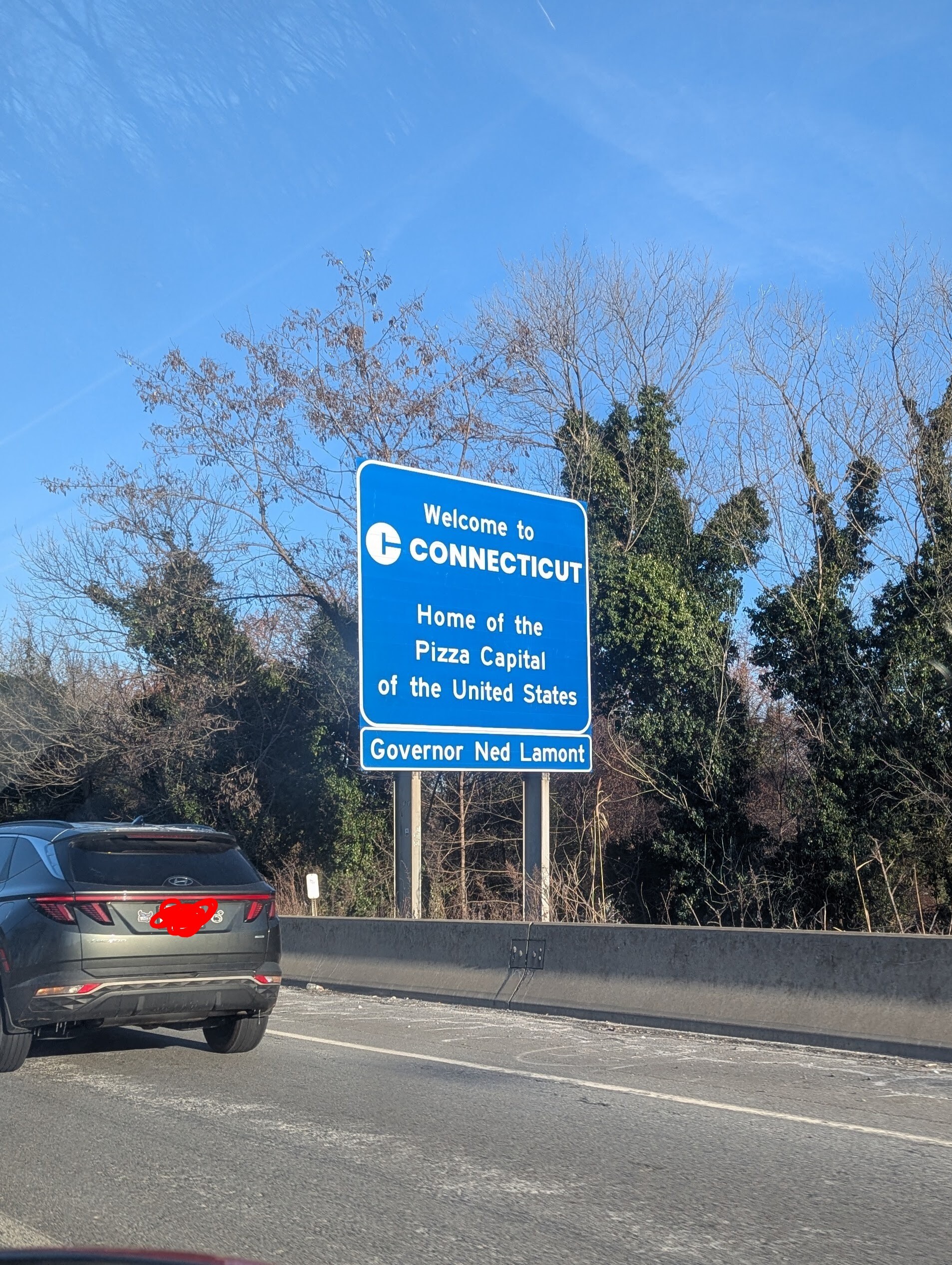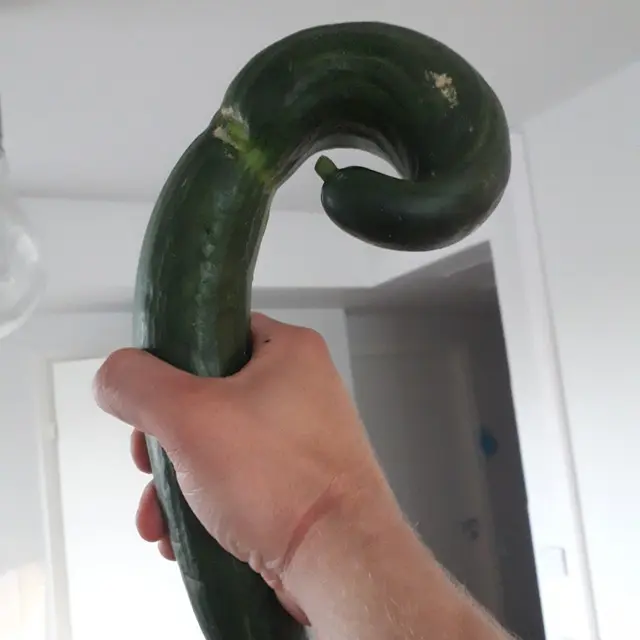Besides the obvious “welcome to [state name]” sign. Is there a significant change in architecture, infrastructure, agriculture, store brands, maybe even culture?
My state has piss poor roads.
Every time I leave my state the roads are noticeably smoother and less noisy.
It’s very distinct and almost comical.
I’m up in Canada and we have provinces here … I live in Ontario and in the year 2000 me and a friend took a motorcycle ride across Canada to the west coast. Great trip.
But for motorcycle riders in Ontario, especially northern Ontario, its famous for rain during the summer, especially when you want to go riding. Sure enough in the first week of July that we started our trip, trying to make sure to catch the best weather for riding, we rode through rain for about three days as we drove through northern Ontario.
The funniest thing was … as soon as we crossed the Ontario/Manitoba border, the skies parted and I could literally see dark clouds over Ontario and bright clear summer skies to the west … right at the border of the two provinces.
We had great weather the rest of the trip! … and sure enough when we did the return trip, we were rained on again in northern Ontario!
I pray for my suspension every time I go from Ontario to Quebec.
I had that driving into a new county by the coastline. Right at the county line it was like a sheet of rain pulled across the road.
michigan?
I plead the 5th.
Let me guess, South Carolina? Been through there twice, and the change was jarring and immediately noticeable crossing into Georgia or NC.
Lmao I was driving about 16 hours solo to get back to Michigan. Legitimately immediately after crossing the Ohio to Michigan border, the road contrast was so incredibly stark lol. Immediate potholes everywhere.
My state disallows billboard advertising, which I forget until I cross into another state and have to suffer through Jesus and injury lawyer ads.
One of the many great things about Vermont
Never been, but I’ve heard it’s lovely.
Not the easiest place to get to, but it sure is beautiful
Vermont? I remember that that’s a thing there.
Why is it always lawyers?
I saw one that was just a photo of an eye and a phone number. I wasn’t from the area, so it was driving me nuts wondering what it meant. Didn’t take long driving through the area to learn that this lawyer has so many different billboards up, that his eye alone has become recognizable.
That’s crazy! Hope he never gets a retina biometric lock on his door.
There must be a lot of money in injury law, but no nationally-known firms, so your choice is either a referral or their name bobbing out of your subconscious from driving past it every day.
In CA there’s this injury lawyer who has billboards all over highway 101 from San Francisco to San Diego. Hundreds of billboards. His name on the billboards is Sweet James and he has a pony tail. Sweet James. I don’t know how a lawyer could become so seemingly popular while using that name.
What about, “Something wrong? Call Ann Phong!”
I couldn’t believe driving through Missouri. What a shit hole.
I never saw these personally, but ten years ago in Matt Gaetz’s district a shelter ran billboards with “She’s your daughter, not your date”. Yikes.
you know, most roads will tell you. The change in asphalt for sure will tell you exactly
plus for me at least, Idaho is different than Washington
the roadside advertisements is instantly different
the highways are laid out in much different ways
the people are absolutely different almost to an extreme
Where I come from the asphalt change was how I knew I was in the next County
oh yeah, that happens here too, just not as much because our counties usually have the same funding and contractors

Ah yes, CO to NM
It’s Nebraska.
¯\_(ツ)_/¯
Or, image reversed, west/east Washington
Nope.
The main thing you’ll notice is a shit ton of stores for anything that’s not legal in one state, or taxed higher in one state.
The rest of the stuff mixes together along state lines and there’s no clear divide except for the legal/tax stuff.
Crossing into Wyoming from Utah is hilarious for this. Suddenly there’s porn, cigarettes, beer, fireworks, and more porn!
Crossing into Wisconsin from Minnesota, I will start seeing lots of fireworks stores.
Been a few years since I lived in Minnesota, do you still see signs for Spotted Cow beer as you cross into WI? I had friends bringing trunks of sixers back and while I would always accept a free craft beer, I didn’t understand the hubbub.
The limited distribution makes people think it’s a mind-blowing beer. It’s pretty good.
I never noticed them! I don’t tend to pay attention to adverts though.
When crossing into Minnesota from Wisconsin, do you see lots of dispensaries?
Major roads have a “welcome to wherever” sign but minor ones won’t. They’re always a clear delineation in the pavement, though, because neither state is going to pave one single molecule of distance further than they have to. And they never seem to be able to arrange it so that there isn’t a noticeable bump at the junction.
One of my neighboring states also has some kind of pathological aversion to putting complete and legible signs for the names of roads at intersections, too. So the disappearance of all useful street signs is therefore usually also a clue.
North Carolina paves its roads. South Carolina air drops its roads.
You know you have crossed into South Carolina when the suspension of your vehicle is torn out from under you.
I love that the Dutch talk the same way about the Belgian roads
Are the Belgian bricks uneven?
I don’t live in a state that borders SC, but I can think of no better answer to the question at hand.
Even Asheville roads, post hurricane, are at this point way better then SC roads. Not saying we’re spending wisely, though. I sure wish DOT wasn’t just a highway/stroad development department.
It still kills me we got a hurricane in the mountains.
When you pass into Indiana, you’re immediately overcome with this opressive sense of forboding and despair. Also the roads immediately turn to shit.
Also, the ad signs will alternate between adult toy stores and anti-abortion messages every few hundred feet.
I don’t live near there anymore, but when I did you could legitimately tell when you crossed to NJ because there was trash absolutely everywhere along the sides of highway.
A lot of states in the south will also have a precipitous road quality drop at the state line.
Ah yes, the Garden State. What do they garden? Apparently strip malls and trash.
We have great corn, tomatoes, blueberries, strawberries, and cranberries. It’s not all sprawl
Totally agree. It’s just sad to see the extent of the sprawl with seemingly no regard for anything except “development.”
What part of Jersey? Just curious. I will say, I’ve been happy with the NJ plastic bag ban because it’s helped some. Still wayyy too many people around here that don’t give a shit and litter.
Trenton area mostly. The bag ban wasn’t in effect last time I visited, so if it’s improved the situation that’s great.
The butthurt that I witnessed in Wawas and Grocery stores in the wake of the ban was glorious
You sure you don’t mean Staten Island? It’s a literal island of garbage, with garbage people living on it. Like one of the wonders of the world, but the opposite, whateve that would be.
Besides that, whether you’re on 295, or 202 or 78, or 80, when you cross the river into PA, the road goes to absolute shit. But for the most part, the cities along the river aren’t bad. You got Easton okay, but Phillipsburg sucks. New Hope and Lambertville, lovely. Trenton sucks. And yeah, I don’t really go south of 195 except at the shore.
All my years in NYC and I never did go to Staten Island, and god willing I never will. Unless taking my tourist friends/family on the ferry to see the Statue of Liberty and immediately turning around and going back on the next ferry without even leaving the transportation center counts. But the Staten Island ferry is actually free, unlike the Ellis Island ferry, so screw that.
And yeah, PA roads are… special. Worst I’ve seen outside the south for sure. Trenton area was mostly where I was going to and from, so that might be why the NJ/trash association is so strong for me.
Everytime I cross into Ohio I feel like I’m losing the will to live.
I feel that too, and i live here :(
My friend visits chicago to Dayton Ohio often, he says the roads turn to shit the moment he crosses over to Ohio lol
field on one side, field on the other. if I am on the interstate, the surface gets really shitty on our side because brownback and the republicans in topeka drained the highway fund to give the koch bros and fat corpo-farmers a tax break.
Roads. It is pretty common around where I grew up to notice you are in a different states when there is a sudden shift in road conditions. They never communicated about when to do repairs or anything, so it was almost always an obvious line between either a really shit road and a smooth one, or vice versa. Sometimes you could even tell based on the noise or feel of the road, if the other state uses different road construction materials.
Sounds a lot like how all borders of Latvia felt like just five years ago or so. A lot of the maps they use for any planning work have just plain white colour outside the borders, so after the last village there’s just the border, and then… nothing.
So, once you were beyond the last village inside Latvia, there was of course no point in properly maintaining the roads. You are sitting in a bus, somewhat slumbering. Suddenly the ride becomes very uneven and you look through the window to see commas over and under half of the consonants in viļļaģe ņames :) (plus a lot of That only lasts for about five minutes, though.
And the same when exiting Latvia: bumpy road for five minutes, then the bumpiness ends and the villäges are pülling öff shenänigäns with double dots, or, alternatively, there’s suddenly a lot of poop ųndęrnęąth lęttęrs. (Okay, in reality a Lithuanian letter only knows how to poop when in the beginning or end of a word)
It’s a clever way to say “welcome to our co-o-o-ountr-r-r-r-r-y”! Boringly, some years ago that feature was removed, but I expect things to normalize in 10 years time. Estonia and Lithuania will maintain their roads also at the borders, but Latvia only in the relevant parts of the country, not at the outer limit of existence. Until the condition of the road to nowhere gets too ridiculous and they have to – exceptionally and begrudgingly – repair even those unnecessary pieces of road.
(And yes, this did also apply to the transcontinental road used by trucks going from Finland to Poland and Germany and further to, well, anywhere.)
You have to go across the biggest river around.
Delaware makes you pay to leave New Jersey
“If youre good at something, dont do it for free.”
You gotta pay to leave NJ regardless of which way you go which I think is funny. Makes me think of a Bronx tale; “now youse can’t leave”
But it’s a solid investment.
Connecticut is making a bold claim here to anyone leaving NY

Yeah I would hardly call Ned Lamont a governor.
Mayor of the town of Connecticut.
He legalized weed at least
What’s the point of putting the governor name on the road sign? How is that information useful to drivers?
Ya know. I don’t know. Every state does this as far as I can tell and so I’ve never questioned it.
If I had to guess, its how the DOT or Highway department shills to Tue new governor
“Hey look boss, we put ya name on da side of Interstate 69 from Illinois!,”
It’s totally legit highway info. Completely not grifting public money for the governors election campaign. /s
In Wisconsin, Walker straight up put a campaign slogan (“Open for business”) on those signs. Fortunately, those got taken down for a simple “Tony Evers, Governor”.
I’ve lived near the Mason Dixon line for my whole life and you know when you get to Maryland because the roads aren’t covered with potholes and/or construction.
Wait are you coming from PA or DE? Because the Maryland roads near Virginia are god awful. And I mean the little roads as well as the Maryland half of the beltway that seems to always be under construction.
Coming from PA. As bad as MD roads are ours are worse
The same goes for the Netherlands and Belgium. Or at least it used to be, I haven’t been to belgium in years.




















